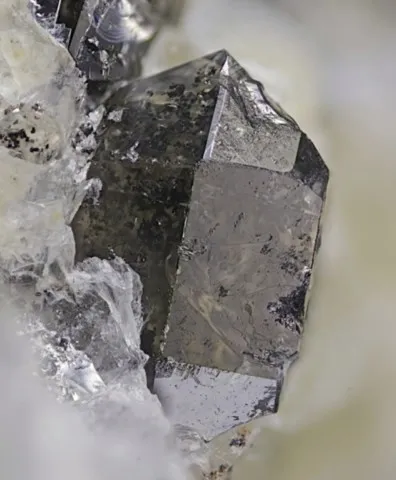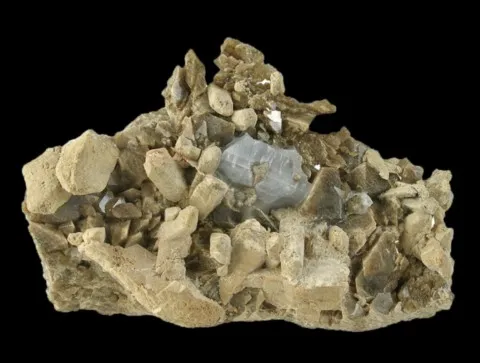MONTICELLITE
Class : Silicates
Subclass : Nesosilicates
Crystal system : Orthorhombic
Chemistry : CaMgSiO4
Rarity : Rare to uncommon
Monticellite belongs to the group of olivines of which it is one of the least common representatives. It is a high temperature mineral in calcic contexts, which is mainly encountered in metamorphic impure dolomitic limestones and skarns in contact with gabbros or granites. It is rarer in certain ultrabasic rocks, nepheline basalts, carbonatites and lamprophyres. It is also found in certain meteorites. It was named in honor of the Italian mineralogist Teodoro Monticelli. Monticellite rarely appears in short prismatic crystals, frequently rounded, but they can still reach 5 cm. The color is quite bland : whitish to greenish gray or yellowish gray.
Main photo : Monticellite from Caspar quarry, Ettringen, Germany © Volker Betz
Monticellite in the World
Twinning
A twin is known on {031}, forming 6-pointed stars.
Fakes and treatments
No fakes recorded for this mineral species.
Hardness : 5 to 5.5
Density : 3.03 to 3.27
Fracture : Irregular to sub-conchoidal
Streak : White
TP : Opaque to transparent
RI : 1.639 to 1.680
Birefringence : 0.014 to 0.017
Optical character : Biaxial -
Pleochroism : None
Fluorescence : None
Solubility : -
Magnetism : NoneRadioactivity : None


